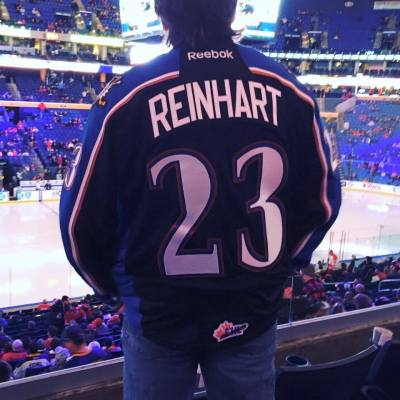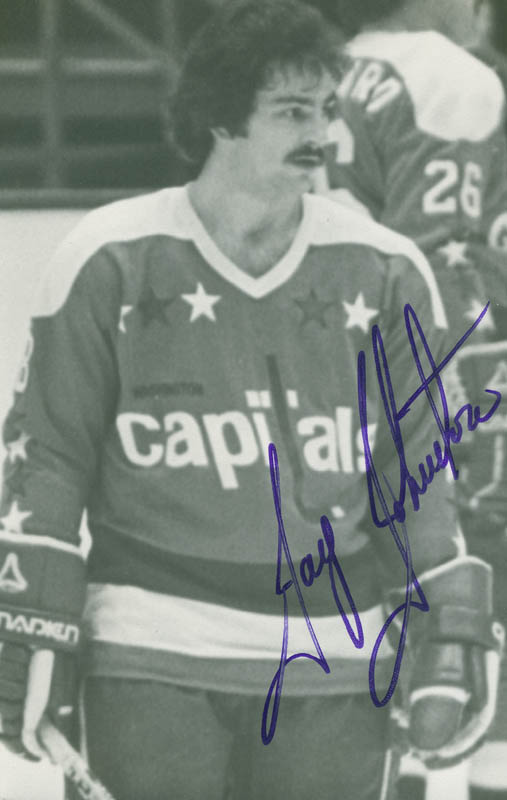“During my time in Hershey, one of my teammates was a guy named Mike Haworth”, Jay Johnston is telling me. Johnston and Haworth were both defensemen for the Hershey Bears at the very end of the 1970s and into the early-1980s. “Mike was a helicopter pilot, and sadly he died in a helicopter crash (August 14th, 2008). In the locker room in Hershey, he gave me the nickname ‘Jonah’. He always called me ‘Jonah'”. Even to this day, Jay Johnston’s Hershey teammates still call him by the same nickname when they get together. “For years, I never knew where he got the name from. Well, if you have ever read the Spider-Man comics, the editor-in-chief for the daily newspaper is named J. Jonah Jameson”. I laugh when Johnston tells me this, as I know the Spider-Man comics quite well and I can see where he is going with this. “Look up J. Jonah Jameson online, and you’ll see that there is a striking resemblance between the two of us”. Indeed, there is.
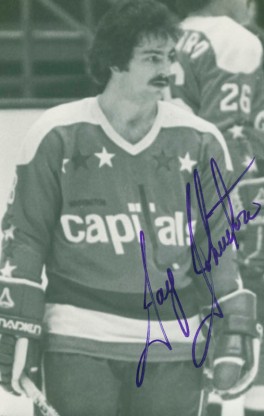
The thought of making it to the NHL someday never crossed the mind of Jay Johnston, let alone playing hockey professionally, no matter what league it would be in. In fact, compared to most Canadian kids, Johnston started playing the game very late in life. “I actually didn’t start playing until I was 10-years old”. Born February 25th, 1958, Jay Johnston grew up in Hamilton, Ontario, and though hockey would take him to numerous other cities throughout his career, as we talk this evening he is residing in Hamilton once more, and has been for quite sometime. “The employees for Westinghouse were organizing hockey and lacrosse teams for their youngsters. My uncle worked for Westinghouse, and got me into lacrosse the first year. The following year he asked me if I wanted to play hockey, so I figured I would give that a try”. As a youngster, Johnston’s favorite hockey team was the Detroit Red Wings, and the legendary “Mr. Hockey”, Gordie Howe, was his favorite player.
Despite the late start to playing, Johnston would play his Junior-A hockey with the Hamilton Mountain A’s before he was drafted by the Hamilton Fincups to play his Major-Junior hockey in the Ontario Major Junior Hockey League. The oddity being that although the Fincups were originally from Hamilton, during Johnston’s first year with the team they had to relocate for a season and were briefly the St. Catharines Fincups; the move necessitated by the fact that the ice making equipment for the old Barton Street Arena (also known as the Hamilton Forum) stopped working and was considered irreparable, with the arena eventually being demolished in 1977. For Johnston’s second year with the Fincups though, the team returned to Hamilton by utilizing the Mountain Arena.
No matter where they played, the Fincups were both incredibly talented and very tough. During Johnston’s two years of Major-Junior, the team was laden with future NHL talent in the likes of Dale McCourt, Ric Seiling, Al Secord, Rick Wamsley, Willie Huber, Randy Ladouceur, Gaston Gingras, and Al Jensen, while Johnston was one of ten teammates his first season, and six teammates his second season, that hit triple digits for penalty minutes. The 1976-77 season saw the Fincups achieve an outstanding record of 50-11-5, thus solidifying for them the Hamilton Spectator Trophy awarded to the team in the OHL that finishes with the top regular season record.
Even while he was a part of these great teams and superb successes, it was not until the second half of Johnston’s final season of Major-Junior where he had the notion that making it to the NHL was even possible. “I had expected just to go onto University; I wasn’t even thinking of the NHL. But (defenseman) Willie Huber ended up getting hurt my second season, and that opened up a regular spot for me to play. Up until that point, I hadn’t played a lot, but when I started playing more regularly I figured that I had a shot”.
And at least in the minds of the Washington Capitals, Jay Johnston had more than just a shot. “Well, for starters, I never expected to be drafted. But then I started hearing that I was going to go in the eighth-round of the draft”. Whatever scouting report touted Jay to go as late as an eighth-rounder ended up being quite false, as Washington would end up selecting him in the third-round of 1978 NHL Amateur Draft, the 45th-player overall. The selection likely prompted by the Capitals recognizing Johnston’s hard work and determination on the ice, as well as his natural sense of commitment to whatever was best for the team. When I ask him his thoughts about going to the Capitals, a team that had perennially been an NHL bottom-feeder since their inaugural 1974-75 season, Jay clearly tells me that he “really didn’t care who” drafted him; he was going to give it his all no matter where he ended up.
Jay Johnston’s first season of professional hockey was with the Capitals’ IHL (International Hockey League) affiliate, the Port Huron Flags. When I ask Jay what that first season of pro hockey was like, he responds with a question of his own, “have you ever seen the movie Slap-Shot?”. When I chuckle and affirm for him that of course I had, he elaborates. “Well, I had seen the movie too, and I thought it was complete B.S., but when I got to the IHL that was exactly what it was like”. In that first season with Port Huron, Johnston put up a staggering 409-penalty minutes, and even that total only ranked him third overall in the league for PIMs. “Fighting wasn’t something new to me. The Fincups were known as a rough team, but when I got to the IHL it was just at a higher level. The main reason why I got those 409-penalty minutes was that there was maybe just one other guy on the team who would fight, and so we did the bulk of the fighting and the numbers added up”.
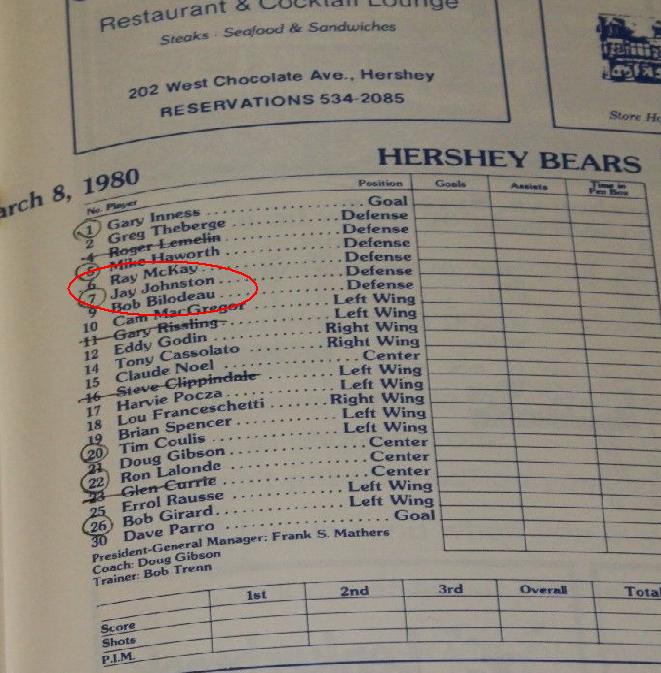
After a lone season with Port Huron, Johnston would spend the next five years of professional hockey splitting time between the Capitals and their American Hockey League affiliate, the Hershey Bears. That first season though with Hershey, 1979-80, and only Johnston’s second pro season, would bring about a rarity in sports that is hardly ever seen. I have heard great players such as Mark Messier attest to the fact that when teams win championships, a brotherhood of sorts is formed. If I recall correctly, I remember him using the line “we will walk together for the rest of our lives”. With all due respect to “The Messiah”, while his words ring true, I do not know if they hold the same degree of true companionship and closeness that is shared by the 1979-80 Calder Cup Champion Hershey Bears.
“To this day, we get together every five years. We have a reunion, and ninety-five percent of the team gets together. A handful have died, but as many of us that can make it, do”. To hear the sense of camaraderie in Johnston’s voice and affection that he feels for that particular team gives me goosebumps. The ’79-’80 Bears were arguably the truest definition of the word “Team”. That may sound quite cliché, but look closely at that team and what they accomplished when the odds were very much stacked against them. The Bears sported a losing record that year of 35-39-6. Not a single player on their team finished in the AHL’s top-ten for point scoring that season. While Nova Scotia’s Norm Dube led the way with 101-points, Hershey’s top point getter was Claude Noel with a modest 62. A quarter of the team, if not more, were 30-years old or older, and were deemed as castoffs. Guys like 6’4″ 33-year old defenseman Ray McKay who had seen his fullest NHL season with the defunct California Golden Seals, as well as other members of the over-30 gang like Bob Girard, goaltender Gary Inness, defenseman Roger Lemelin, and in his final season of professional hockey, the ever colorful Brian “Spinner” Spencer. “At that time Washington was not a good team”, Johnston tells me, “and they were really trying to clear out the veteran players from their roster. That’s why there were so many down in Hershey”. But even the younger guys on Hershey’s roster were almost entirely unproven, like rookies Greg Theberge and Harvie Pocza. Or players that did not have much in the way of credentials when they were selected in the fourteenth-round of the NHL draft like Wes Jarvis.
But what the 1979-80 Hershey Bears lacked in talent, they made up for in teamwork times a thousand. “That was the most special team that I ever played on”, Johnston states, letting his mind travel back to that time. “When we had success, it was never one individual. Look at the team we faced in the Calder Cup Finals, the New Brunswick Hawks. They had all this talent. At least twenty of those guys went on to solid careers in the NHL”. Looking at the Hawks roster, Jay is spot-on. The Hawks had Ron Wilson, Darryl Sutter, Murray Bannerman, Bruce Boudreau, Paul Gardner, just to name a few; all had substantial NHL playing careers, mostly in the years proceeding that Finals series. And yet, it was a ragamuffin Hershey Bears roster that defeated them in the six-game Final and won the championship. One for the ages, and a closeness that may supersede many Stanley Cup winning teams.
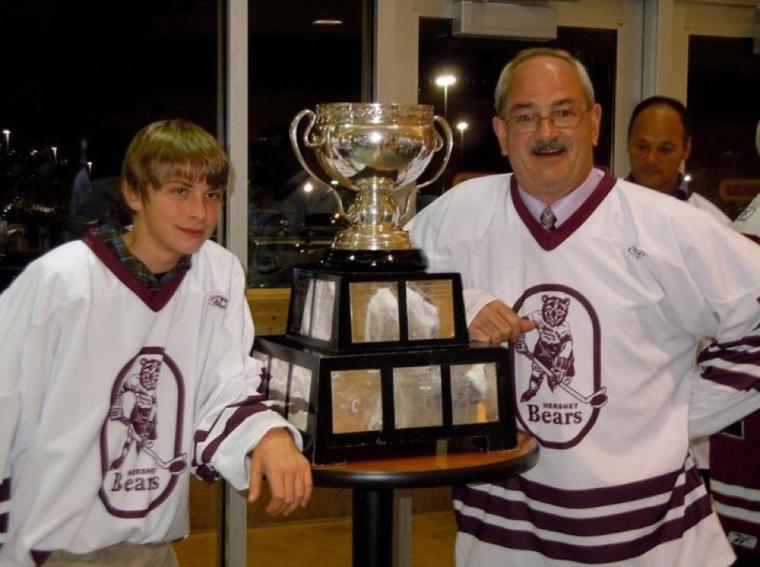
Perhaps stemming from that successful championship season the year prior, Jay Johnston would see his first taste of an NHL game in the following 1980-81 season. “I was getting ready to play a game with Hershey against the Adirondack Red Wings when I was told that I got called up by the Caps. The first person that I called was my dad to let him know. I had to join the team in Calgary, and would play my first game against the Calgary Flames. It was before the Saddledome had been built, so the Flames were playing in the old Stampede Corral stadium, which only sat about seven or eight-thousand. Even still, as I was skating around during the warmup, I thought to myself ‘Here I am; I made it to the NHL’. I even got into a fight in my first game”. Jay tells me that he squared off with Flames’ longtime tough-guy Willi Plett, an eventual veteran of over 2,500-PIMs. When I ask him how the fight went, Jay dryly says to me, “Well, I’m still breathing, aren’t I?”. I cannot help but laugh raucously at his point being made.
Jay Johnston only suited up for a total of 8 NHL games, but the point is that he made it. Many never even get a sniff of NHL playing time. I ask him to share more with me about his time with the Capitals and what his best memories are. “Obviously the first game sticks out in my mind. But another thing that was really special was that we went to Sweden for training camp the one year, and the Caps played the New York Rangers there for exhibition. (Hockey legend) Bobby Hull was trying to make a comeback with the Rangers, so I actually got to play against him in the game. Afterward, there was a reception at the U.S. Embassy in Stockholm, and Bobby came up and talked to me for a while. So that was pretty special that he would take the time to do that”. When I ask Jay to talk about his defense partners while playing for the Capitals, although he was not paired with anyone in particular, he was usually teamed up with veteran Pierre Bouchard; a five time Stanley Cup champion with the Montreal Canadiens. Yes, his time in the NHL was brief, but definitely some special moments experienced while Johnston was there.
From 1984 until 1987, Jay Johnston would play the final three years of his professional career back in the IHL, this time with the Fort Wayne Komets, though this time around the IHL experience would be a bit different; a better brand of hockey. “The Central Hockey League had disbanded in 1984, and so the IHL really took over as one of the top minor leagues. In fact, many NHL teams had their number one farm teams in the IHL. So it was a much higher level of hockey than before”. Partway through his third season with the Komets, Jay knew it was time to step down. “I had hurt my knee in Muskegon, and most of that year with Fort Wayne I was playing with my knee hurting me nonstop. It took a while to figure out what was going on, but eventually they found that blood clots were causing the pain in my knee. I found out that I have a blood disorder that causes me to be susceptible to blood clots. The prior summers, I had spent a lot of time trying to recover from injuries as it was. And then they had me on blood thinners to help deal with the blood clots. I was told that as long as I was on blood thinners, there was no way that I could keep playing professionally. So I knew it was time”.
Though he could look at having to retire due to health concerns with bitter sentiments, Jay Johnston actually looks more positively on the experiences of his career without regrets. “I knew that I would not be making it back to the NHL. To be honest though, in Hershey and Fort Wayne, I got to play with two of the best hockey teams that anyone could have hoped for. Both teams had strong followings. They regularly had attendance between eight or nine-thousand. And both teams had a lot of longevity as franchises”. The 1980 Calder Cup winning Bears certainly being the pinnacle of Johnston’s time with either of the two franchises.
After retiring, Johnston dabbled a bit in coaching. A short time after he finished playing, the company that his former wife worked with transferred her to Hartford, Connecticut, and Johnston took up coaching a high school team for four years, Windsor High. “It was kind of funny. The local newspaper did an article on me coaching the team. Well, a former teammate of mine from Hershey, Tommy Rowe (also a former Washington Capital and Hartford Whaler) saw the article and looked me up. He asked me to come play for the Hartford Whalers Old Timers. I said to him, ‘Tommy, I can’t play for the Whalers Old Timers; I never played for the Whalers!’, to which he said, ‘C’mon, sure you can’. So I ended playing for the Whalers Old Timers, and guess who my defense partner is in my first game? Gordie Howe!”. Very cool to see Johnston’s life come full circle at that point by meeting his boyhood hockey hero and being paired up with him on defense.
In 1990, Johnston was contacted by Hamilton’s OHL team at the time, the Hamilton Dukes, for yet another coaching opportunity. “The gentleman who owned the Fincups also owned the Dukes. He offered me the position, and I ended up coming in to finish the end of the 1989-90 season, and then coach the entire 1990-91 season”. Unfortunately for Johnston, the Dukes were a team that struggled heavily and possessed a minimal amount of talent. During his lone full season coaching the Dukes, the only player on the team who would see any substantial time in the NHL was tough-guy Alek Stojanov. As stress and the pressure to be successful mounted, Johnston and the Dukes would merely compile a record of 17-43-6, and that would be it; Johnston was released by the team for the following season.

These days Jay Johnston has not been involved with hockey for quite sometime. Though he coached his son’s team for a few years, he has since left coaching and the game, and has been enjoying retirement. Even still, it is the life-lessons that hockey taught him that he still carries with him to this day. “It taught me how to work with others. I never cared if I received any attention or not; it was always the team that came first as far as I was concerned. As long as the team did well, that was all that mattered to me”.
Wrapping up our conversation, Jay and I again touch upon how the rare bond of the ’79-’80 championship Hershey Bears has stood the test of time. “Even when we get together now, everybody still calls me ‘Jonah’. Claude Noel was my best friend on the team, and still one of my best friends to this day. Everyone still calls him ‘Christmas’. I look at Ray McKay, and think ‘gosh, when we played together, he was over 12-years older than me; he’s got to be in his 70s now’. I had never even known until recently that he had played in the NHL prior to that team in Hershey. All these years have gone by, and we still get together, and it’s like no time has gone by at all”. And that is the testament to Johnston and his Hershey teammates; that is what makes them such a special brotherhood, as opposed to most championship teams in any sport. Because they put the team first and foremost when they were on the ice together and in the locker room, when they see each other today they are able to pick up right where they left off. Most sports teams, when they come upon an anniversary of a championship team, have to have their public relations groups put together an event with pomp and circumstance, and have to seek out the players to attend, making arrangements to get them all there, with the players sometimes accepting begrudgingly. Not so the case with Johnston and his Bears teammates.
Despite their ages now. Even though some of them have now passed on. They come from all across Canada and the United States to get together every five years. To recollect and share in what they accomplished over 35-years ago. Just as meaningful to Jay Johnston and his Hershey teammates today, as it was so long ago. And true to his character, when Jay Johnston talks to me about his career, he’s not the one to bring up his 8-games in the NHL, nor his 409-penalty minute season, nor even his status as a third round draft choice. Jay, more than anything else, wants to talk about the team and what they accomplished. And that’s what is most remarkable about Jay Johnston – he is a teammate in every sense of the word.
